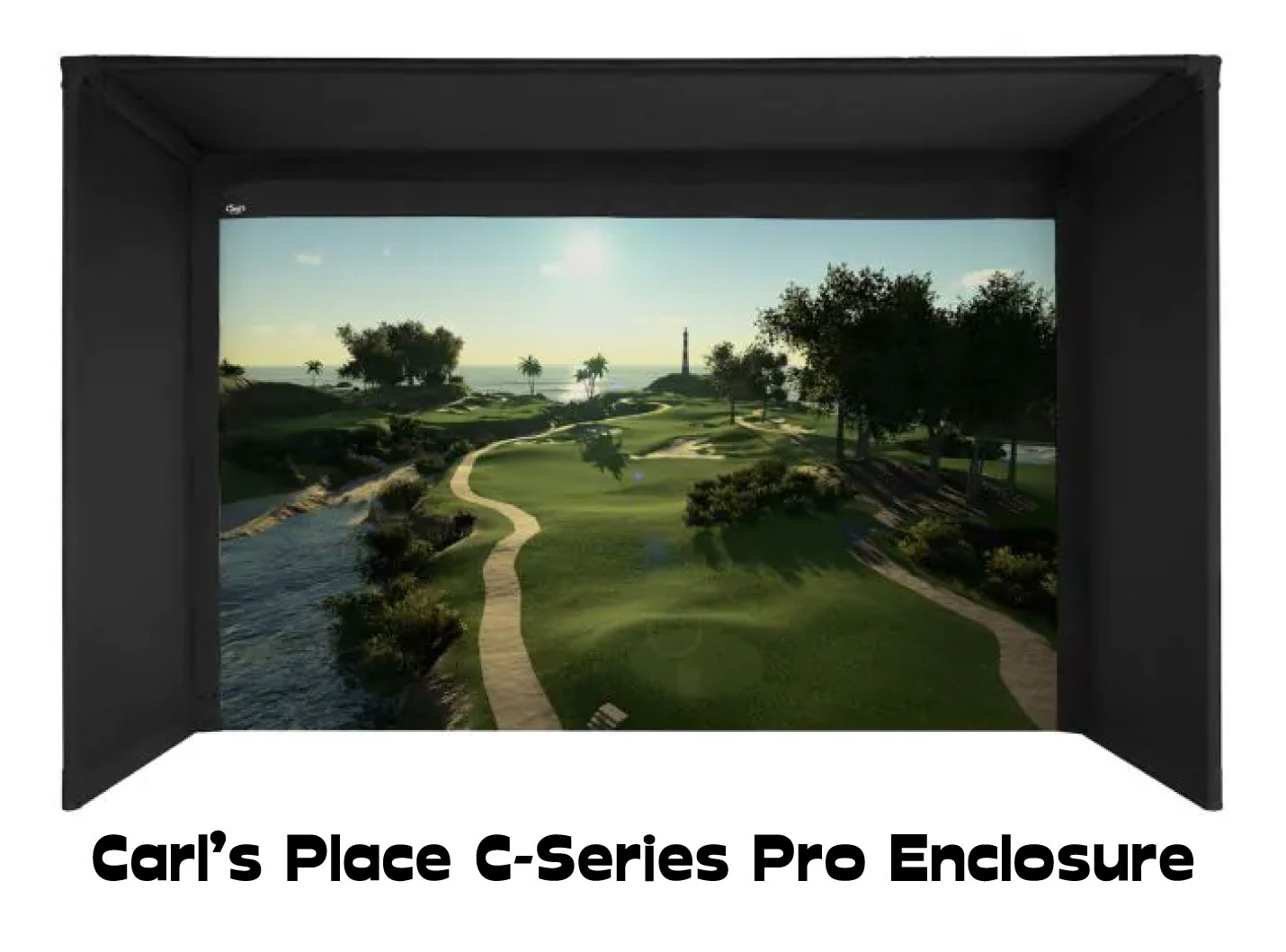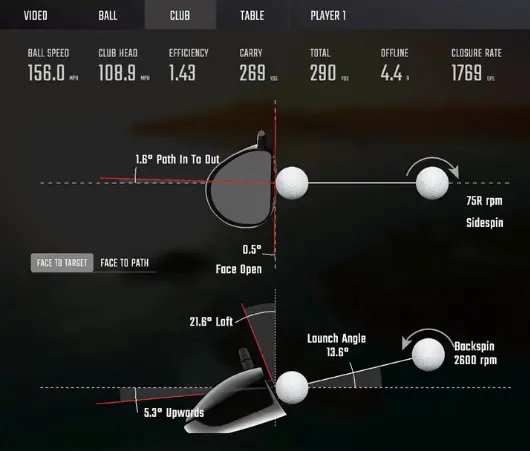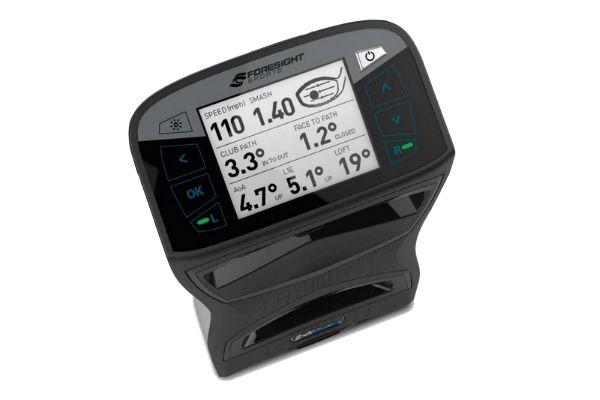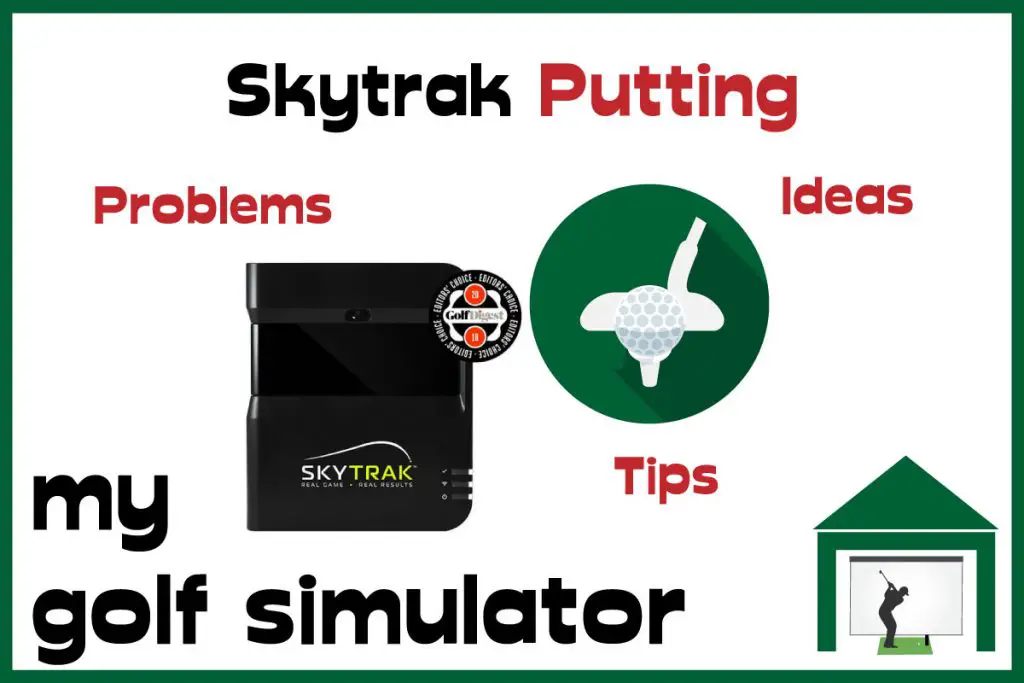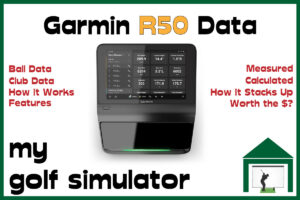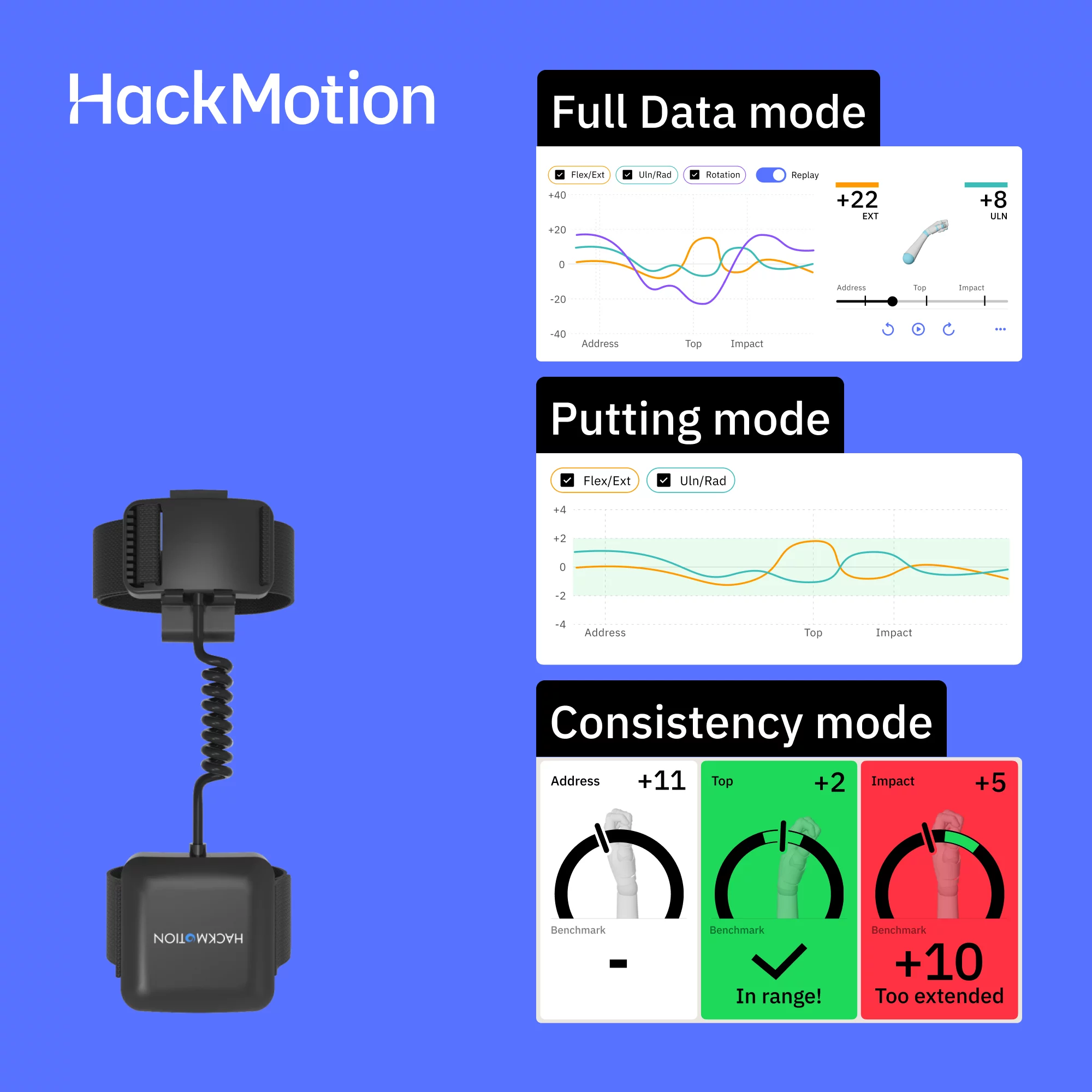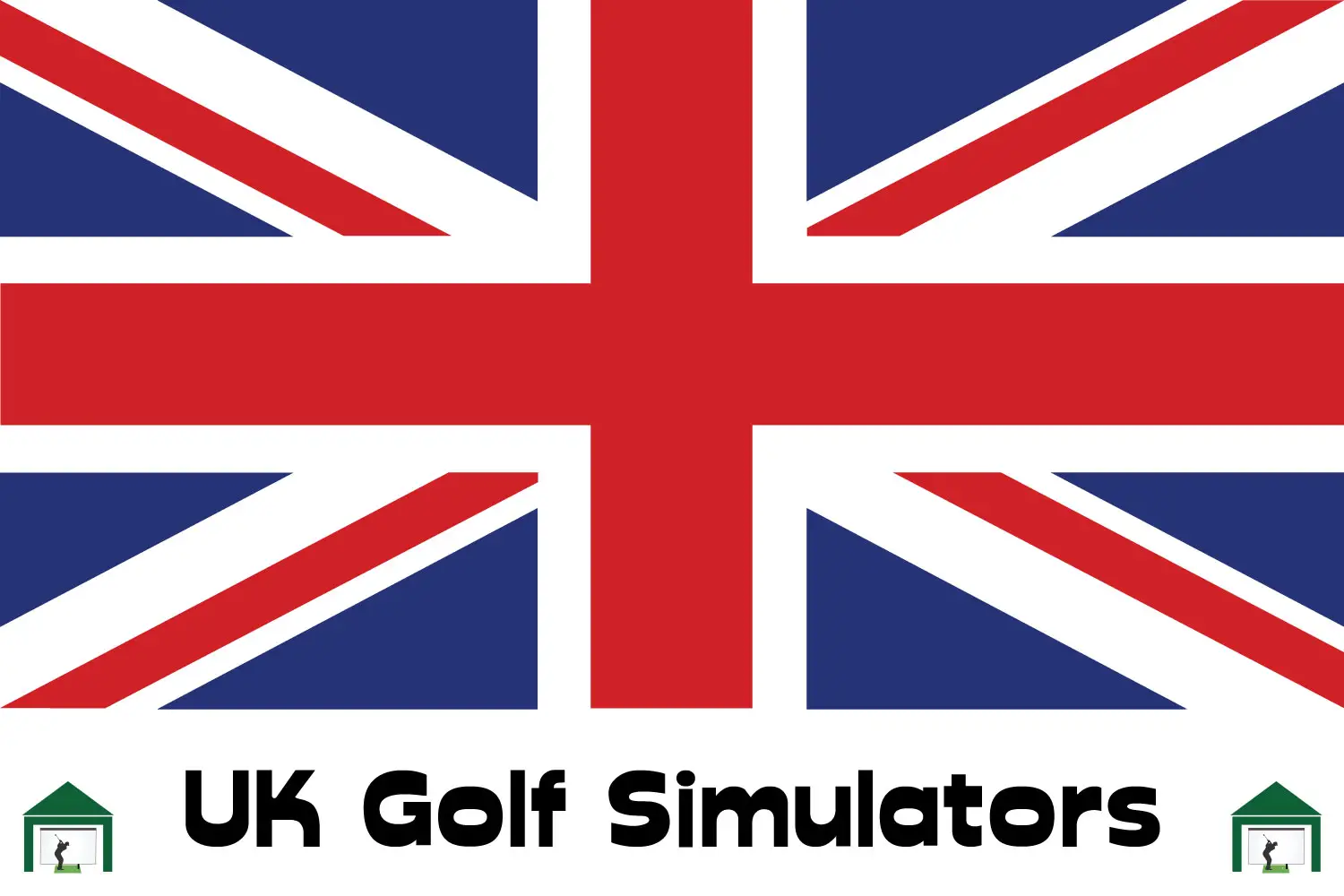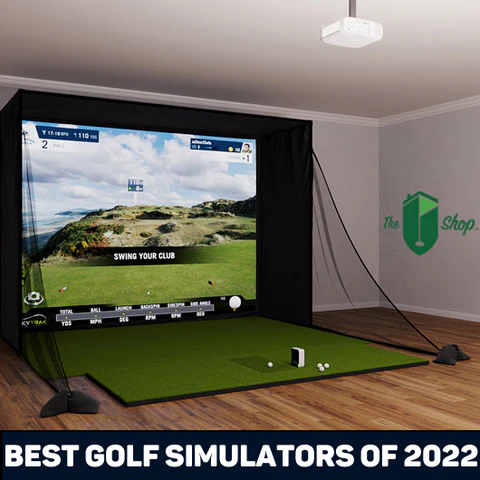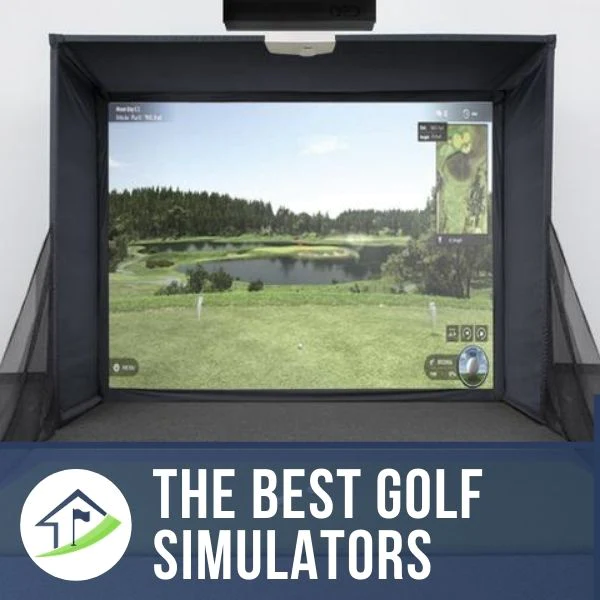How do Launch Monitors Work? – Radar vs Camera Systems
SHARE
Posted in Launch Monitors, Launch Monitor Data
You need to choose a Launch Monitor that is perfect for your golf simulator setup, and different types of launch monitor technology will suit your needs in different ways. Knowing the difference between radar and camera-based launch monitors is essential.
Launch Monitors use either radar technology or high-speed cameras to record the motion of the golf ball and clubface. Radar-based launch monitors excel outside and in larger spaces where they can enjoy a view of the entire ball flight. Camera-based systems can often be used in smaller spaces.
Both technologies have pros and cons and are suited to different types of golf simulators.
This article will discuss how radar and camera-based launch monitors work, the key differences between golf simulator setups suited to each type of system, and also we’ll list which launch monitors fall into each category.
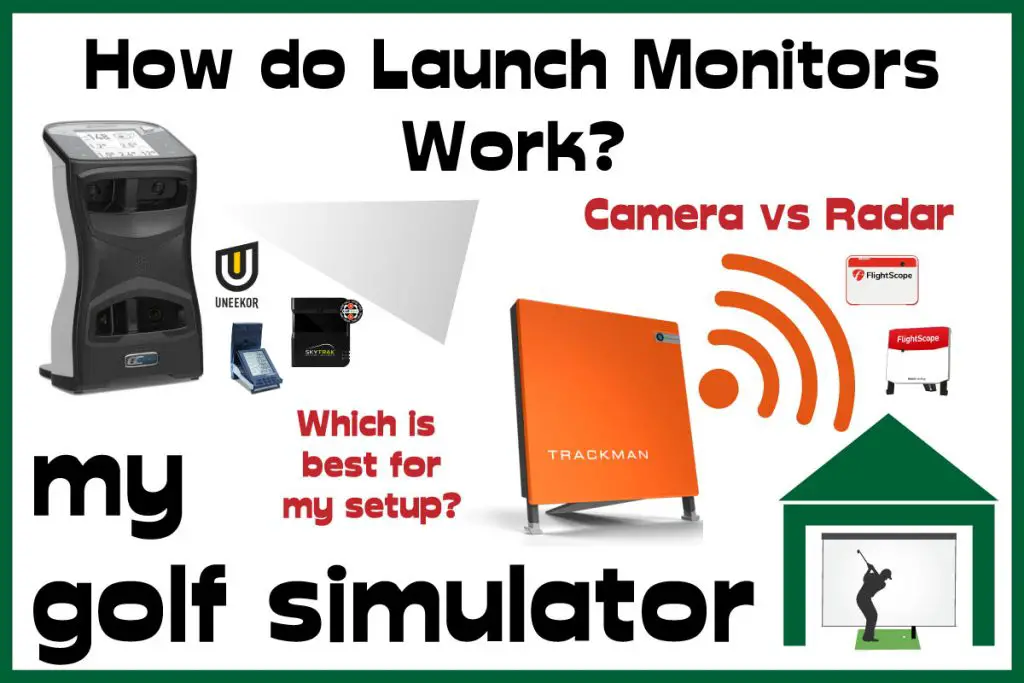
Camera vs Radar Launch Monitors – Key Differences
Radar launch monitors track moving objects, the ball in our case, within a large part of the golf simulator space. They need a good view of the whole area and generally sit behind the golfer.
Radar launch monitors emit electromagnetic waves and observe for changes in the properties of the reflected waves (wavelength in particular) that return to the unit. The launch monitors are able to turn this data into measurements for the ball’s spin, speed, trajectory, and more.
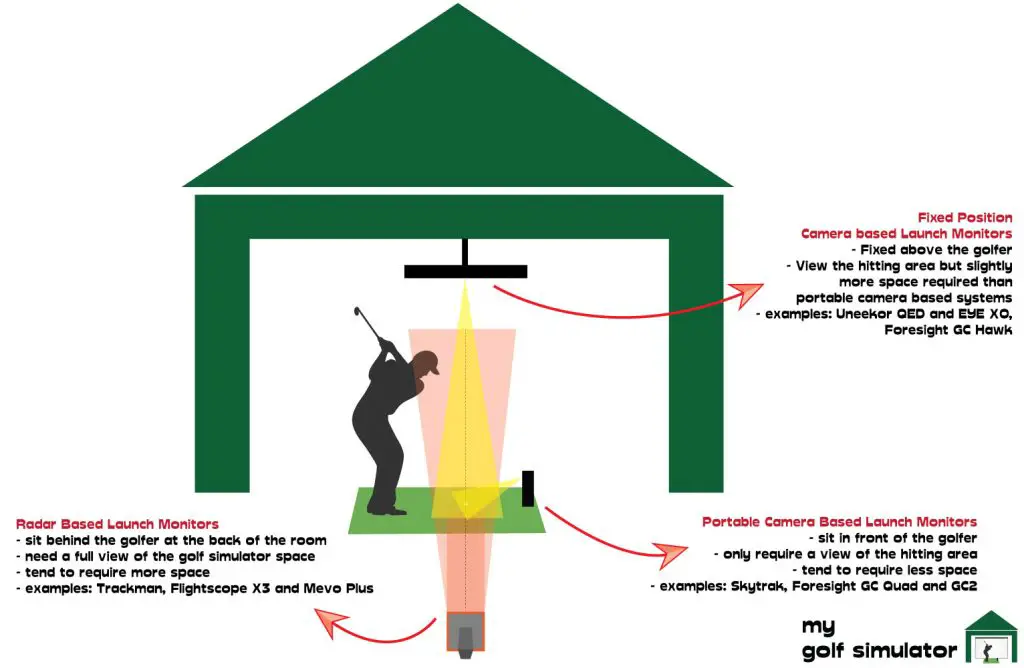
Photometric, or camera-based launch monitors, only require a view of the ball itself and the space just before and after it. They generally sit opposite the golfer just beside the hitting mat, although the Uneekor launch monitors, as well as Foresight GC Hawk, are placed above the golfer mounted on the ceiling.
They use very high-speed cameras to take numerous images or video footage of the ball as it is impacted by the club and makes its initial flight. The overhead camera-based models tend to use infrared light sensors to improve their view of the hitting area, without showering the golf simulator room in bright visible light.
Measurements of spin, speed and other parameters can then be made by comparing these images.
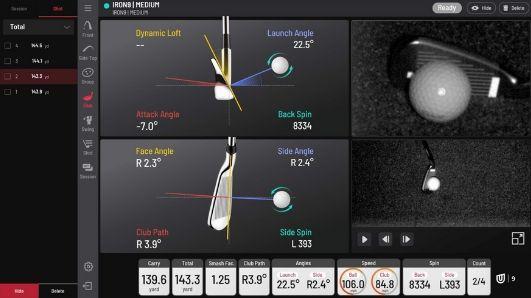
Both types of launch monitor can benefit from reflective stickers or dots placed on either (or sometimes both) the clubface and ball. These help the units pick up the spin of the golf ball, which is integral to modeling other parameters such as direction and carry distance.
Often, more premium launch monitors require less assistance from additional stickers.
Size of Golf Simulator Space
In general, radar-based launch monitors require larger spaces in which to work well than camera-based launch monitors. This is mainly because the camera launch monitors only need to view the ball’s starting position and just in front of it.
From the perspective of the portable camera-based launch monitor, it does not matter how far the ball travels to the screen, how high the room is or how wide. You just need enough room to hit the ball with a comfortable swing and in a manner that is safe (ie there is no dangerous bounceback).
Radar launch monitors on the other hand need a full view of the simulator space and the flight of the golf ball. For this reason, they thrive outside where space is much more plentiful.
Outdoors, they will have a view of the golf ball for a much longer portion of its flight, there will usually not be a big net or screen stopping the ball’s flight after 15 feet or so. Optimal accuracy with a radar launch monitor depends on the ball being able to travel over a minimum required distance so that adequate radar readings are achieved.
For more information on how much space is required to build a golf simulator, check out my dedicated article here.
Where is the Launch Monitor Positioned?
Radar-based launch monitors sit behind the golfer in order to get a full view of the golf simulator space, and the flight of the ball. They need to be positioned in such a way that no objects, including the golfer, obscure the view of the ball’s flight.
Radar launch monitors also require the correct amount of tilt to be applied, as they need to be angled upwards slightly to achieve the best view of the space. The correct positioning and tilt settings are advised by each of the manufacturers. Sometimes the tilt will need to be altered to suit different golf simulation programs or modes.
Camera-based launch monitors sit in front of the golfer just next to the hitting area. They only need a view of the ball and the area just before and after. Some launch monitors create a box in which you can hit from, others use a laser dot on which you should place your golf ball.
They definitely shouldn’t interfere with the swing but psychologically could cause some unease being so close to the ball. This is one of the many reasons to purchase a protective case if there is one available (eg for Skytrak).
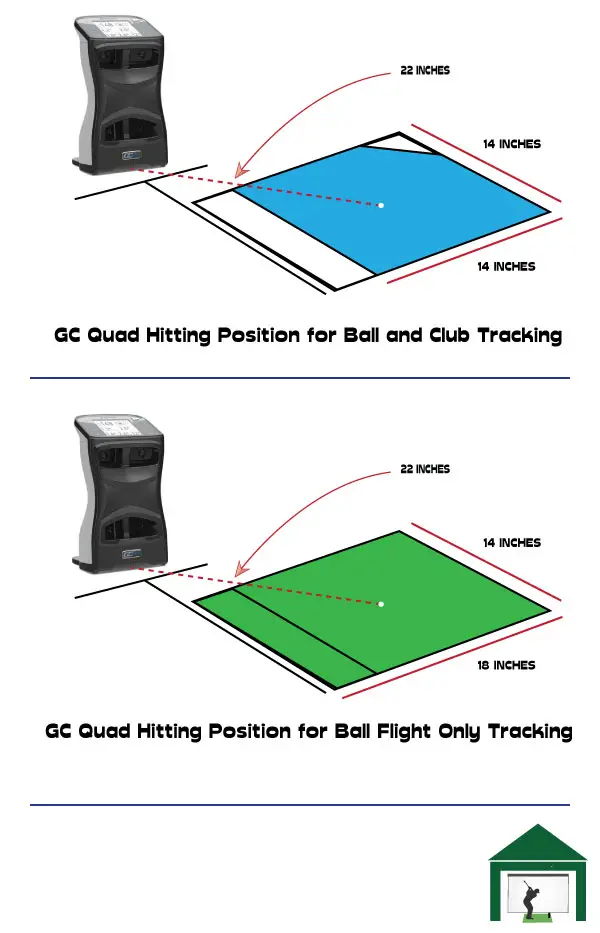
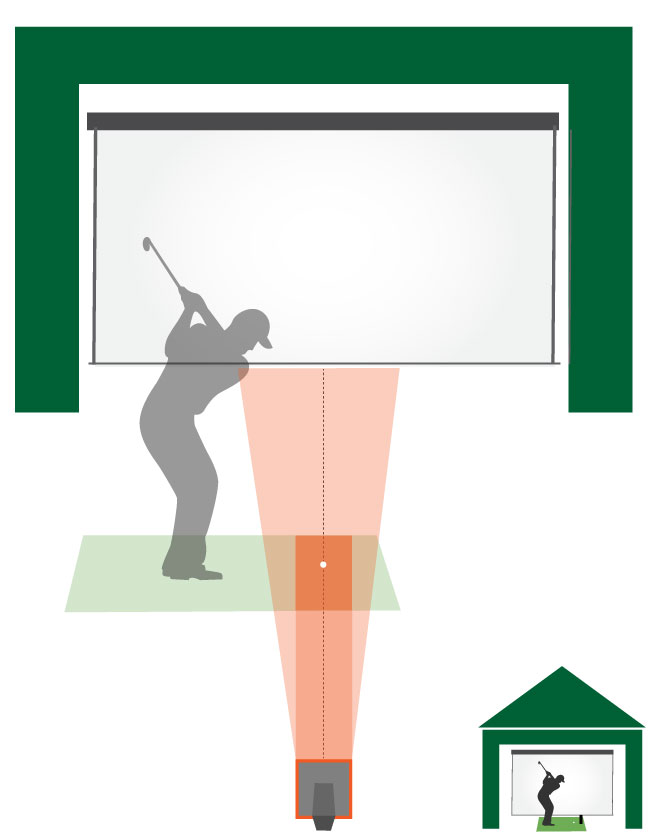
How do Photometric (Camera-Based) Launch Monitors Work?
Photometric launch monitors work by taking numerous high-speed images of the golf ball before, during, and after impact with the club. The images are then compared by the onboard components within the launch monitor and measurements are made relating to the spin, speed, and direction of the golf ball.
Some data points such as carry distance are then modeled using algorithms specific to that launch monitor, using the data that has been directly measured.
The camera-based launch monitor must have a perfect view of the golf ball and hitting area. Sometimes there will be confounding factors that stop the shot from being registered properly. The ball must contrast the color of the background well (avoid white walls in your golf simulator).
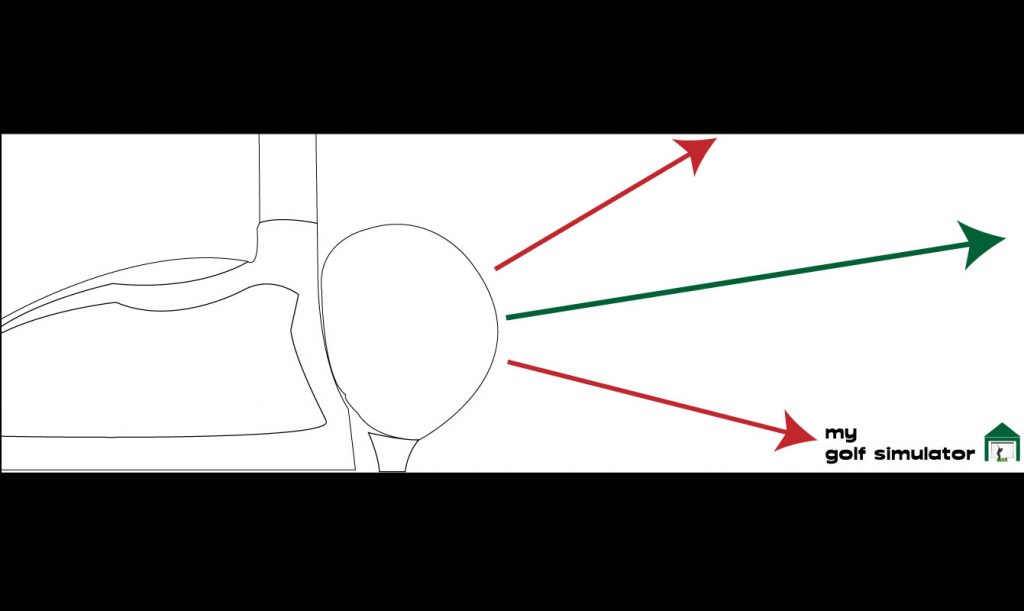
Which Launch Monitors are Photometric (Camera-Based)?
The following well-known launch monitors use camera technology to record their data:
- Skytrak
- Foresight GC Quad
- Foresight GC2
- Uneekor QED
- Uneekor EYE XO
- Foresight GC Hawk
How does Skytrak work?
Skytrak is a photometric launch monitor which means it uses high-speed cameras to take multiple images of the golf ball before, during, and after impact. The images are then analyzed by onboard software to work out the speed, spin, and launch direction of the golf ball.
Skytrak sits in front of the golfer and projects a red laser dot onto which the ball must be placed. It is best to follow a proper alignment procedure whenever moving the Skytrak unit around. Ensuring Skytrak is level with the hitting surface is important.
As with many photometric launch monitors, Skytrak must be moved from the right side of the golf mat round to the left side, when changing from a right-handed golfer to a left-handed player. This is a downside if you are keen on playing concurrent left and right-handed golf within your simulator.
Radar-based and overhead mounted (Uneekor QED and EYE XO and Foresight GC Hawk) can accommodate concurrent use from the left and right-handed players.
Check out this video from Skytrak Golf on Youtube explaining how the Skytrak launch monitor works.
How does Foresight GC Quad work?
GC Quad is a premium photometric launch monitor which uses four high-speed cameras to take high volumes of images of the club and ball before, during, and after impact. The cameras can record images upto 10,000 frames per second to maximize accuracy.
The GC Quad is referred to as a quadroscopic system given it’s four-camera setup.
In a similar fashion to Skytrak, the GC Quad sits in front of the golfer, gaining a view of the hitting area from the side. If the golfer adds reflective stickers to the clubface, the GC Quad can accurately record the movement of the club face in three dimensions as it moves through the hitting area.
This allows measurement of club data points such as club path and angle of attack. The advanced club data features are often sold as an add on to the base GC Quad package.
The ultra-high quality camera setup on the GC Quad allows for premium putting accuracy, with one of the highest regarded putting analysis packages found in a golf simulator launch monitor.
How do the Uneekor QED and EYE XO work?
The Uneekor QED and EYE XO launch monitors are situated overhead in the golf simulator, in a fixed position. They are generally not intended to be portable. The QED and EYE XO use dual high-speed cameras to record the movement of the golf ball and club, taking large numbers of images before and after impact.
They also utilize infrared light in order to gain a better view of the hitting area without shining bright visible lights down from the ceiling.
Overhead mounted camera launch monitors require more space than portable photometric systems because they sit either slightly in front or slightly behind the golfer and view the hitting area from above.
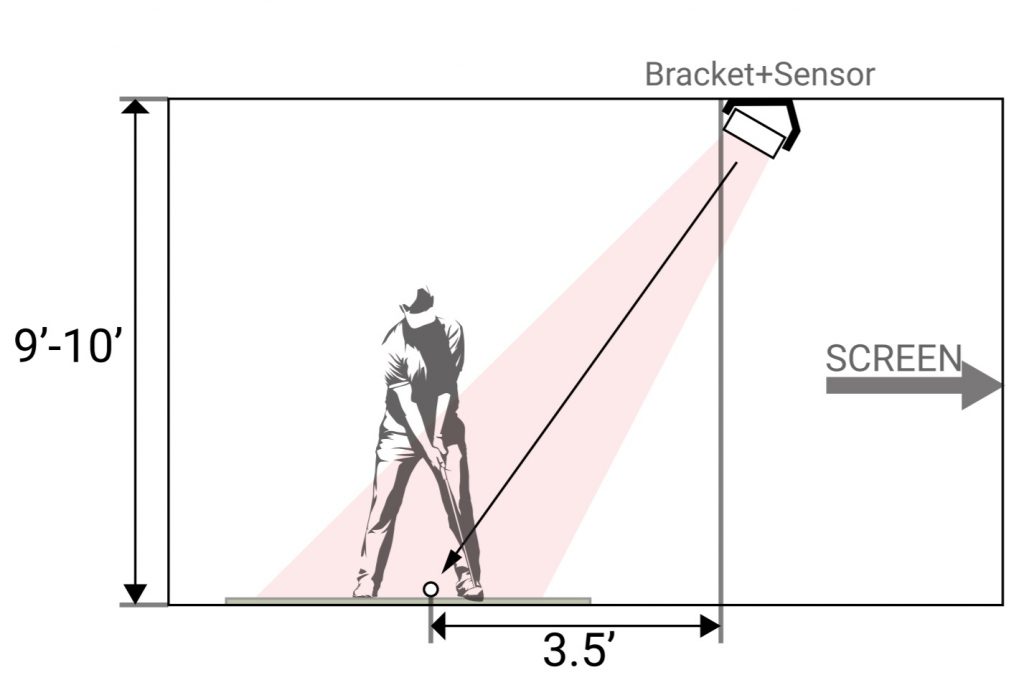
Uneekor’s QED requires marked balls in order to deliver accurate spin readings whereas the premium EYE XO is able to track the movement and spin of any golf ball without additional markings.
The Uneekor launch monitors have excellent software compatibility and base software programs, allowing a wide variety of golf practice and play.
Foresight’s GC awk works in a similar way, though like the GC Quad, the Hawk benefits from a four-camera, quadroscopic setup.
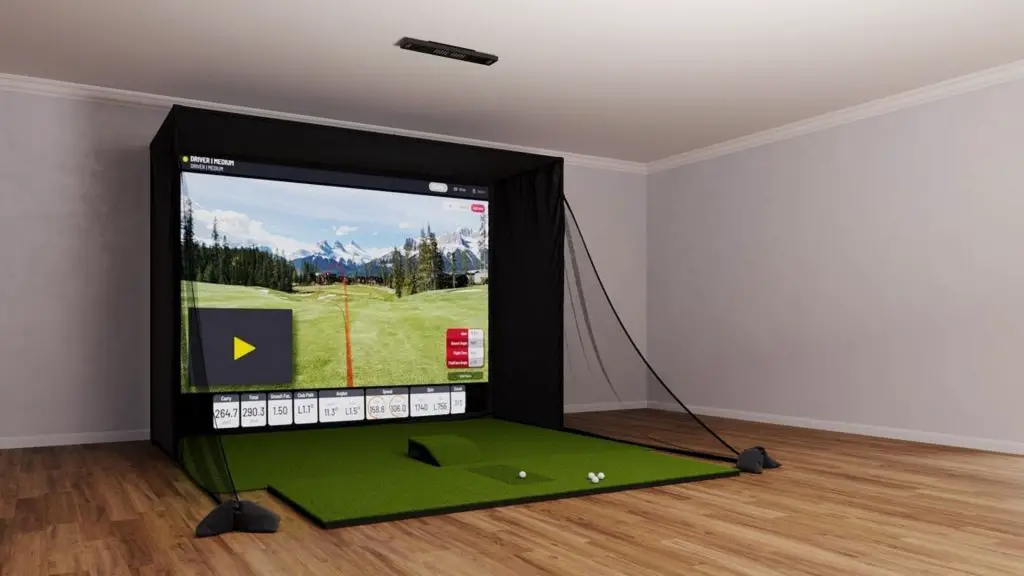
How do Radar Launch Monitors Work?
Radar-based launch monitors such as Mevo Plus use a radar signal to track the movement of the golf ball at and after impact.
The radar system senses the differences between electromagnetic waves emitted and received by the unit, these waves will be affected by the movement of the golf ball through the launch monitor’s field of view.
It is often said that radar-based launch monitors utilize the Doppler effect, where (usually sound) waves moving towards you will appear at a higher pitch or frequency than those moving away. The analogy of a loud siren on an ambulance is used.
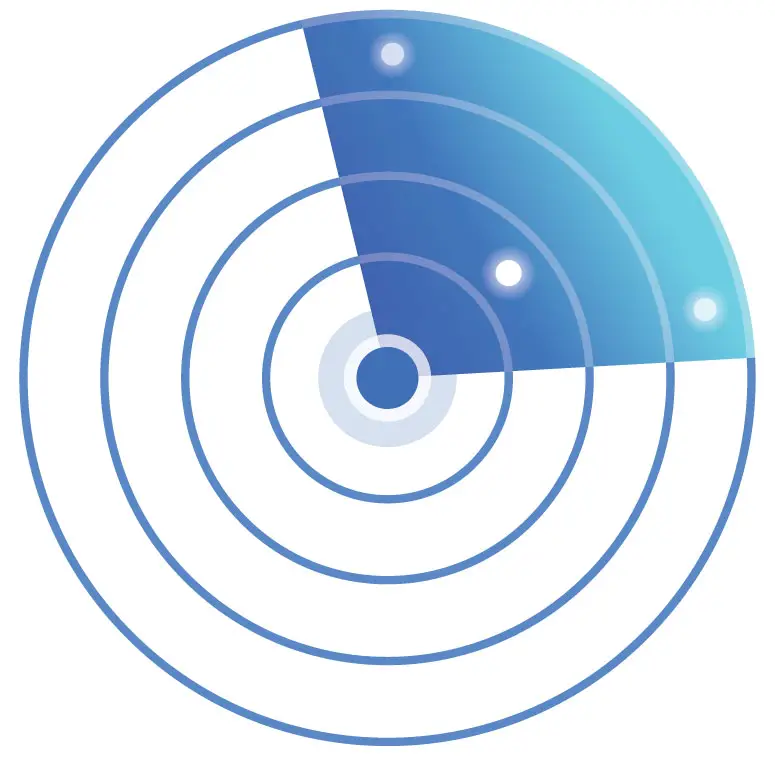
The reality with a launch monitor is a little different, as the radar system uses light rather than sound. Each successive light wave emitted by the launch monitor has to travel a very slightly longer distance to reach the golf ball as it flies away from the unit, before being reflected from the ball’s surface and re-detected by the launch monitor again.
As each light wave has to move farther, the distance or gap between each wave increases, meaning the wavelength goes up. The launch monitor will then receive this information and translate it into ball motion.
The emitted radar signal starts at the launch monitor and spreads out in a cone shape (for indoor use, the unit will look out for a sharp drop in ball speed, which is presumed to be when the ball hits the screen).
Launch Monitors can take these principles and use the Doppler effect to accurately determine the ball’s velocity.
The system is even smarter though as it is able to track the ball’s movement and spin through a 3D environment, as well as its speed.
Which Launch Monitors are Radar Based?
The following launch monitors employ radar technology in order to record the motion of the golf ball:
- Trackman 3e and Trackman 4 (dual radar technology)
- Flightscope Mevo Plus
- Flightscope X3
- Garmin R10 Approach
How does Trackman work?
Trackman 4 is a premium launch monitor which uses dual radar technology to track the movement of the golf ball and club through impact. The club is tracked from knee height before and after impact by one radar system, whilst the ball flight is captured throughout it’s entire flight by another.
Trackman has developed a reputation as one of the leading launch monitor manufacturers, with their technology being visible on many holes on the PGA Tour. They are used by golf professionals across the world for fitting and coaching.
Trackman 4 sits behind the golfer at the back of the room, gaining a view of the whole golf simulator area. Like other radar-based launch monitors there are different possible tilt settings for the Trackman 4, and you can change these depending on the size of your room and the type of play and choice of program.
Trackman has the ability to model the differences felt by golfers using range balls and give results expected from premium golf balls in these circumstances, for example at the driving range. It is also able to accurately record performance in adverse weather conditions when used outside.
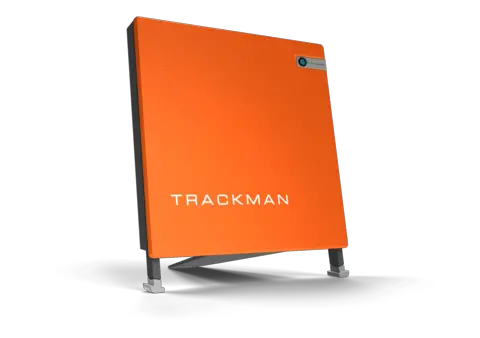
How does the Flightscope Mevo Plus work?
Flightscope’s Mevo Plus uses radar technology to record the movement of the golf ball following impact, from a position behind the golfer. The Mevo Plus sensors track the differences in the signals received back at the unit to record the speed, spin and direction of the moving golf ball within the radar field.
As with other radar-based launch monitors, Mevo Plus has the advantage of being able to record shots from right and left handed golfer playing a match against each other.
Mevo Plus does require metal dots to be added to golf balls used inside in order to gain the most accurate spin readings possible.
Mevo Plus has been felt to be an excellent value launch monitor with solid performance radar technology available at an excellent price towards the lower end of the launch monitor market (around $2,000).
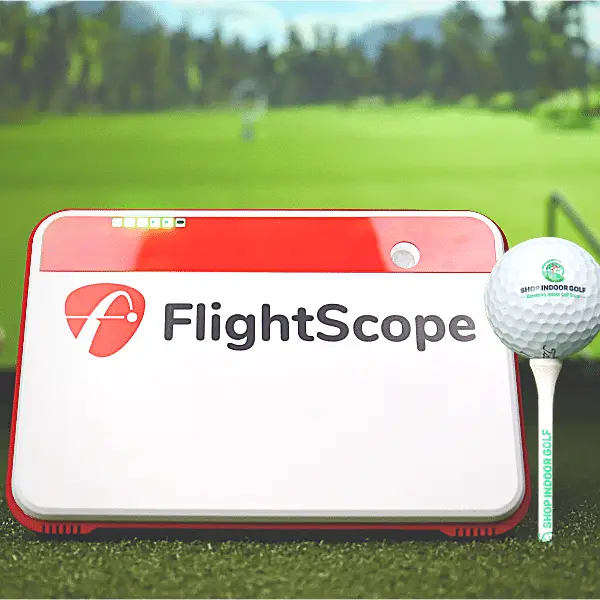
How does Flightscope X3 work?
The Flightscope X3 launch monitor is a premium launch monitor that works by combining high quality Doppler radar with their highly regarded ballistic analysis program. They use a phased array antenna to project the radar signal and call the combination of technologies ‘Fusion Tracking’.
The Flightscope X3 gives the golfer a wide range of data points (27 parameters) including both ball flight data and club data. The system also provides advanced data focussing on wedge strikes, called wedge ‘D-Plane’ analysis to help the golfer work in detail on their short game.
You can add additional cameras on separate devices to bring together multiple views of each swing. The X3 is fully portable and comes with it’s own 5Ghz internal Wifi.
Check out the Flightscope X3 at Rain or Shine Golf here.
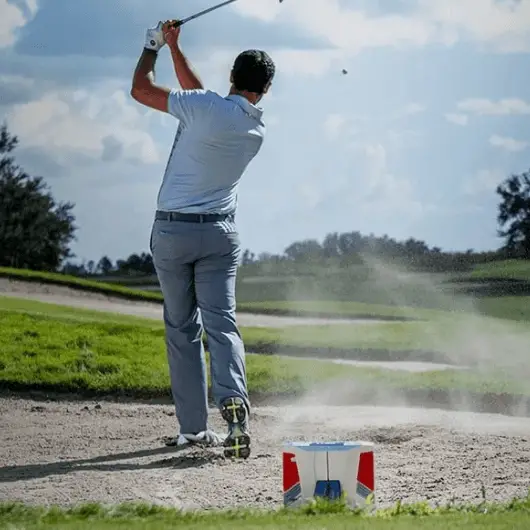
How does Garmin R10 work?
The Garmin R10 is a brand new entry to the launch monitor market, coming in at a much cheaper price point than many of its competitor launch monitors, especially those employing radar technology. The R10 is due to be released in December 2021 and will retail for around $599.
The Garmin R10 works using a radar sensor and is positioned behind the golfer so that it can gain a full view of the hitting area and golf simulator space. The R10 is marketed as a fully portable launch monitor and comes with a suite of features available through a smartphone app.
You can also set up the camera on your smartphone to capture video of your swing and overlay the launch data points.
I will bring you lots more information about the Garmin R10 in the next few months. Check out the Garmin R10 at Shop Indoor Golf here.
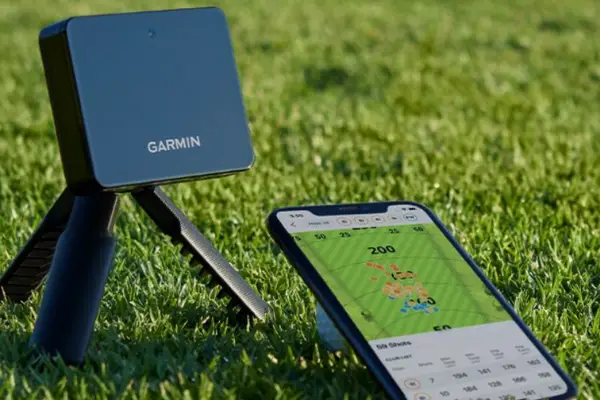
How do Launch Monitors work for Putting?
Both types of launch monitor can analyze putting, which is, of course, important for realistic simulator golf. However, some launch monitors do it better than others and there are often problems with this facet of a golf simulator.
Camera (photometric) launch monitors tend to perform better than radar-based launch monitors for putting accuracy, though there are exceptions to every rule.
A camera-based launch monitor is able to record the starting speed, launch angle and spin rates of a put in just the same way as a normal golf shot.
However, a radar launch monitor must be able to see the motion of the golf ball after it is struck by the putter and maintain an adequate view of the ball for its full roll. This brings into play problems with elements of your setup such as the floor level and ball markings.
The radar launch monitor may benefit from a much flatter tilt setting for putting analysis when compared to viewing higher in the golf simulator space for a normal golf shot.
Check out these two articles discussing how putting works on both Skytrak (which is camera-based) and Mevo Plus (which uses radar).
Should I buy a Radar or Camera based Launch Monitor?
The type of technology used to record data in a launch monitor has implications for several aspects of the unit’s performance. You should consider your needs from a launch monitor before pulling the trigger. I hope that this article will help you come to a launch monitor decision that is right for you and your golf simulator priorities.
Who should buy a Camera-based Launch Monitor?
Camera-based launch monitors will suit golfers working with smaller indoor spaces. Units that sit in front of the golfer taking images of the hitting area, including Skytrak, GC2, and GC Quad, only require a view of precisely this area. They don’t tend to mind how wide, long or high the room is, as long as the golfer can make a comfortable swing.
The camera-based launch monitors which track the ball from overhead (Uneekor and GC Hawk) do require a little more space but can record concurrent left and right-handed golfers playing a match.
However, camera-based systems that sit in front of the golfer are much less suited to those who wish to swap their simulator from left to right-handed use. This should be considered by those who aim to use a golf simulator on a commercial basis.
Who should buy a Radar-based Launch Monitor?
Golfers who enjoy a larger indoor space, or who plan to take their launch monitor outside frequently should consider a radar-based launch monitor. Those wishing to use their simulator space for concurrent left and right-handed use will find a radar system that suits their needs too.
There’s a radar or camera launch monitor for everyone!
There are launch monitors in each category that exist in different levels of the golf simulator market. For example, Skytrak and Mevo Plus both inhabit the $2000 ballpark area of the market, whereas GC Quad and Trackman battle it out at the higher end.
Many golfers considering pulling the trigger on a golf simulator will have to deal with constraints on the space available in their homes. If you don’t have a large space and you’re trying to fit your simulator into a garage or other room, you’ll probably be best off with a camera-based launch monitor.
My favorite launch monitor is the Uneekor EYE XO, which works using camera-based technology, but due to its overhead position, enjoys some of the benefits of a radar-based system (such as concurrent left and right-handed use).
Add in non-ball marking technology and a fantastic range of software compatibility, as well as live views of every golf shot at impact and you have a top-quality launch monitor for an amazing price!
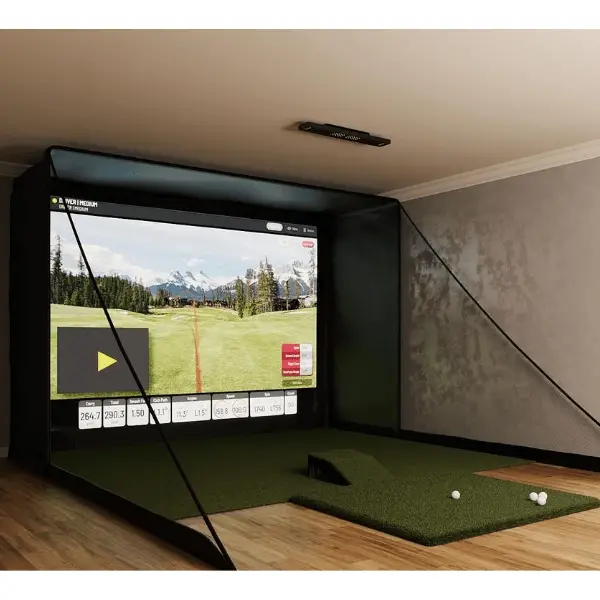
What Data does the Garmin R50 Measure? – Garmin R50 Data In-Depth
Putting with Hackmotion – Step by Step Guide
ABOUT THE AUTHOR
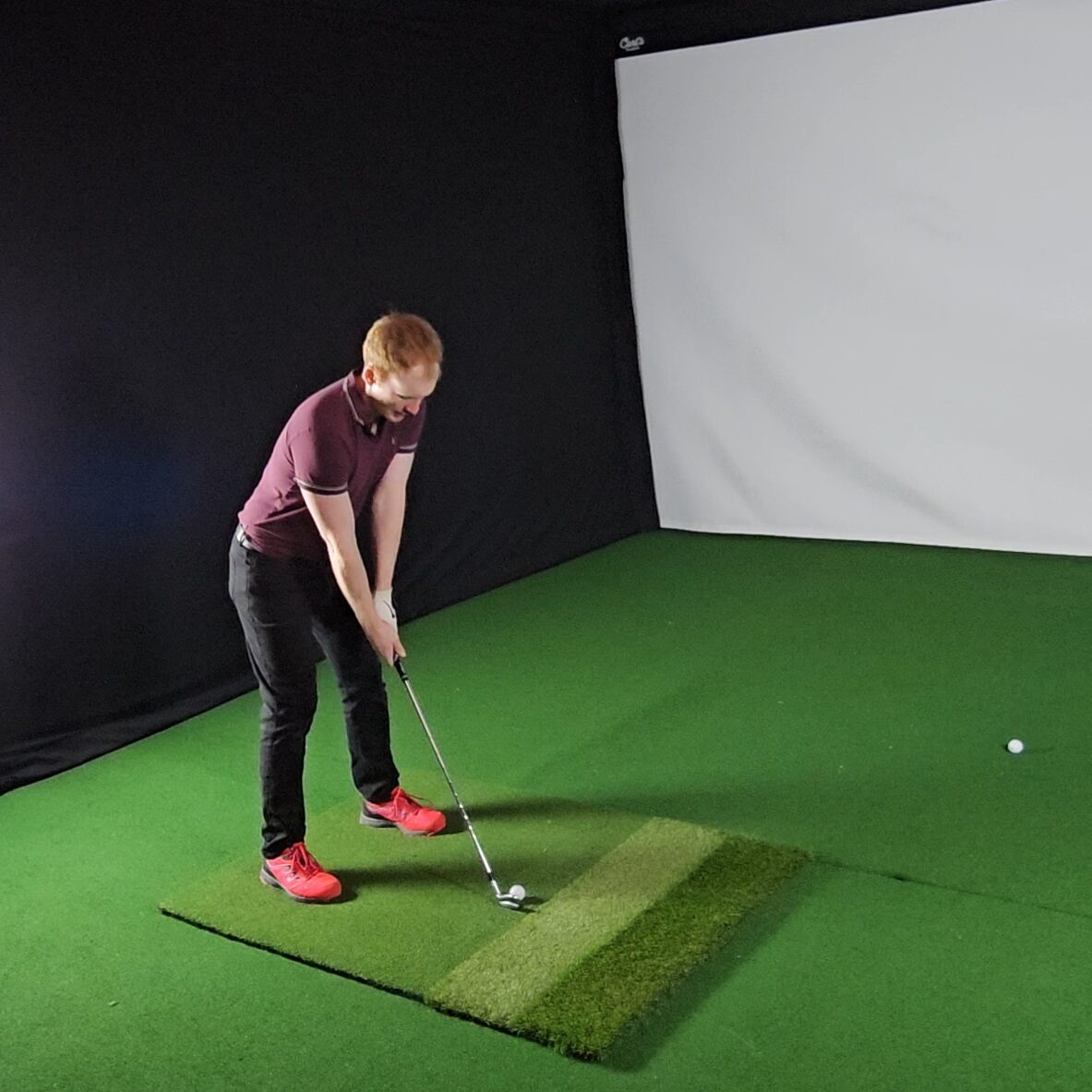
Hello! My name is Alex and it is my mission to bring you all the information you need to build your own home golf simulator! I hope mygolfsimulator.com helps you on your journey to better golf at home!
LEGAL INFORMATION
On this site, you'll find articles on all aspects of building a golf simulator. I will also link to other sites where you can buy some of the simulator components. Some of these links may be affiliate links, which means if you click them I gain a small commission at no extra cost to you. This really helps out me and my site so thank you in advance! mygolfsimulator.com and all related social media accounts are property of Awonline LTD.
